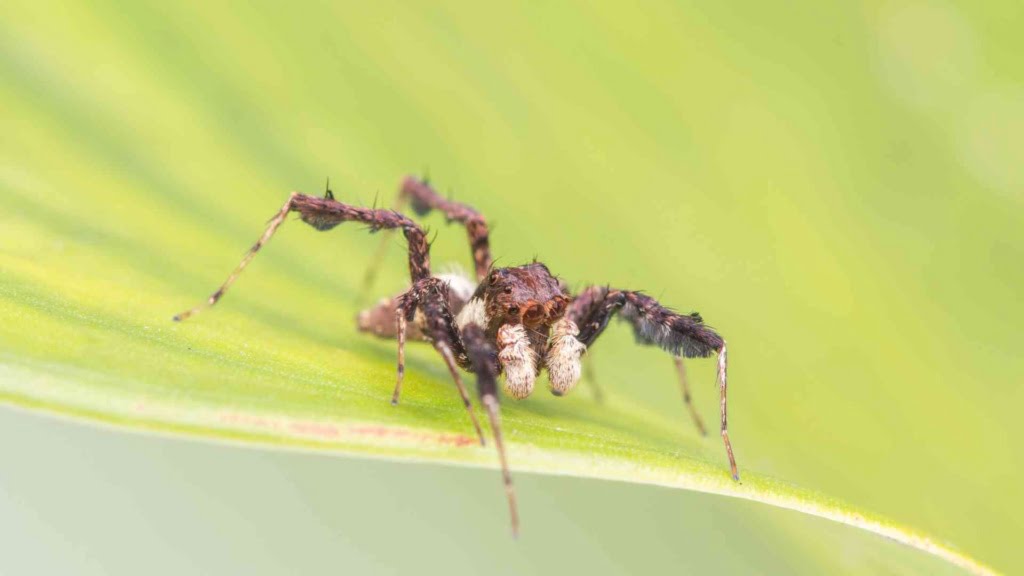Key Takeaways
| Fact | Description |
| Species | There are 17 species of Portia spiders |
| Distribution | Found in Africa, Australia, China, Madagascar, Malaysia, Myanmar, Nepal, India, the Philippines, Sri Lanka, Taiwan, and Vietnam. |
| Diet | Feed on other spiders, making them araneophagic or arachnophagic |
| Size | Female Portia africana spider ranges from 5 to 10 millimeters, which is about 1/5 to 2/5 of an inch. The adult males are even smaller, with a body length of 5 to 7 millimeters, or about 1/5 to 3/10 of an inch. |
| Special Traits | Known for being really smart when it comes to hunting and solving problems |
Introduction
The Portia spider is a really cool kind of jumping spider. It’s known for being really smart when it comes to hunting and solving problems, which makes it pretty special compared to other spiders. There are 17 species of Portia spiders, and you can find them in lots of places around the world, like Africa, Australia, China, Madagascar, Malaysia, Myanmar, Nepal, India, the Philippines, Sri Lanka, Taiwan, and Vietnam.
Physical Characteristics
Portia spiders are quite small in size. For instance, the body length of an adult female Portia Africana spider ranges from 5 to 10 millimeters, which is about 1/5 to 2/5 of an inch. The adult males are even smaller, with a body length of 5 to 7 millimeters, or about 1/5 to 3/10 of an inch.
Diet and Hunting Behavior
Portia spiders feed on other spiders, making them araneophagic or arachnophagic. They even eat the eggs of other spiders, including those from their own family.
Female Portia spiders have a clever way of catching their food. They build webs, sometimes sticky ones, to trap prey. They also connect their webs to the webs of other spiders, who often become their next meal.
Intelligent Hunting
Portia spiders are known for their smart hunting skills. They have built-in tactics for catching the prey they see most often. But what’s really cool is that they can also come up with new ways to catch prey they’re not familiar with, or in situations they’ve never been in before. They do this by trying different things and seeing what works, and then they remember what they learned for next time.
Predators and Threats
Portia spiders have their own predators. They can be targets for larger animals like birds and frogs. Sometimes, these predators are so big that the Portia spiders can’t even recognize them as a threat.
There are also some insects that prey on Portia spiders. For example, mantises and assassin bugs, like the Nagusta sp. indet. and Scipinnia repax, are known to hunt Portia spiders.
Reproduction
Portia spiders have a unique way of finding a mate. Unlike other jumping spiders, the male Portia spider doesn’t just mount female to mate. Instead, he shows off his legs, extends them stiffly and shaking them to get the female’s attention. The female responds by tapping on the web.
After the male mounts her, the female drops a dragline and they mate in mid-air. This can happen either on or off the web. The spider also practices cannibalism before and after copulation. The female usually twists and lunges at the mounted male. If the male is killed before they finish mating, the female will remove his sperm and then eat him. If they finish mating before the male is killed, the female will keep the sperm to have babies, and then eat the male. Most male Portia spiders don’t survive mating. But there’s one kind of Portia spider, called P. fimbriata, that usually doesn’t do this.
Lifespan
Portia species have a life span of about 1.5 years.
Species
| Spider Species | Location |
| Portia africana | West, Central Africa, Ethiopia |
| Portia albimana | India to Vietnam |
| Portia assamensis | India to Malaysia |
| Portia crassipalpis | Singapore, Indonesia (Borneo) |
| Portia fimbriata | Nepal, India, Sri Lanka, Taiwan to Australia |
| Portia heteroidia | China |
| Portia hoggi | Vietnam |
| Portia jianfeng | China |
| Portia labiata | Sri Lanka to China, Vietnam, Philippines, India |
| Portia orientalis | China (Hong Kong) |
| Portia quei | China, Vietnam |
| Portia schultzi | Central, East, Southern Africa, Mayotte, Madagascar |
| Portia songi | China |
| Portia strandi | Ethiopia |
| Portia talwanica | Taiwan |
| Portia wui | China |
| Portia zhaoi | china |
References:

